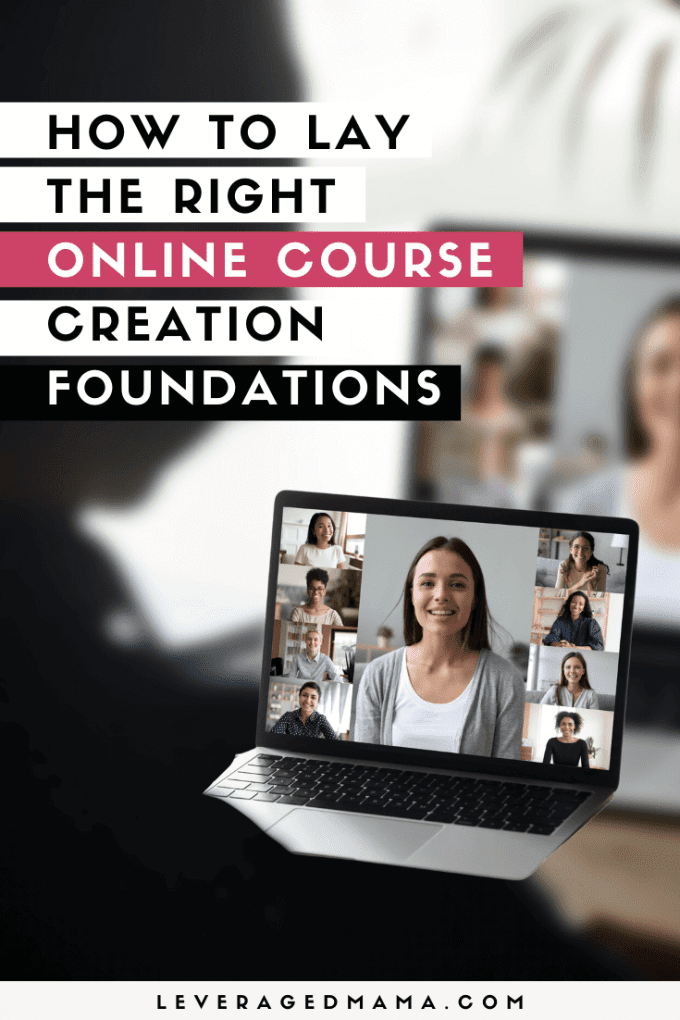When you get to the content planning stage of digital course creation, things can feel a tad overwhelming. Where do you even begin?
What content should you include, and how can you arrange all your ideas into some kind of structure?
Before you get down to the nitty-gritty details of content planning, it’s important to look at the bigger picture.
To get you in the right frame of mind, it can be helpful to consider how the course will enhance your reputation. Also what your cornerstone content should be, and if there is any gateway content you should be tied into your digital course creation process.
In this blog, we’ll address these often-overlooked aspects of content planning. As a result, it will allow you to start building your course with the right foundations.

How To Lay The Right Digital Course Creation Foundations
Creating The Right Perception
What springs to mind when people think of you professionally?
If your online course is going to be the first thing you release into the world, then you want to consider what kind of perception you are creating for your audience. Think about what you want to be known for and how you can build that with your course offering.
If you already have an established reputation online, then consider how your digital online course will fit in with that. If it aligns with what you are already doing, then you can build on the perceptions you have already established.
But, if you are making a pivot or creating a course on a completely different topic, then just consider how that could impact your existing brand. It certainly doesn’t mean you should backpedal or change your mind. You just have to consider how you will set your course material apart from your existing work. In particular, be clear on the differentiation so your audience doesn’t become confused.
Build Your Brand Reputation
As you build your brand, you need to consider your reputation and how you manage it. Reputation management is the process of influencing how people perceive your brand and what they say about your business.
Your online course should enhance your brand reputation and take you a step closer to achieving your business goals. It does this by further establishing you as an authority within your niche.
When you elevate yourself to the level of a teacher, your audience will see you as an authority. Consequently, they will trust that you have the information or skills to help them.
Digital course creation is a way of contributing to a positive reputation, which helps leverage social proof, build your professional network, and grow your business.
If you want your new online course to be a residual income generator, your course content must be high quality and relevant to your brand. Particularly in order to boost your reputation. When considering what content to include, make sure it’s in line with what you want your brand reputation to be.
Focus On Cornerstone Content
Cornerstone content is the content that your brand will come to be known by.
If you aren’t sure what that should be, you can take some advice from your own content catalogue! On your website, it would be the most searched for and visited page. On your social platforms, it would be the posts that your audience seems to consider the most useful and actionable.
If you’re stuck for ideas when planning your course, start with your cornerstone content.
Most cornerstone content is timeless. Therefore focusing on these topics will help ensure your course remains relevant to your audience. Hopefully for a longer period while still attracting and impressing new customers.
Consider Gateway Content In Your Digital Course Creation
Another type of content should be considered when planning your online course. It’s called gateway content.
Gateway content is free, epic content that leads to other paid content. Think of it as similar to a lead magnet to pique someone’s interest. You could prepare a shorter, simplified version of the course presented via email or an e-book.
Your gateway content is ideal for people interested in buying your online course. Although, they may not be quite ready to take the leap right now. By creating and providing gateway content for free, you’re building trust among your potential customers. Thereby demonstrating that you genuinely offer value through your brand.
Gateway content also helps to pique someone’s interest. As a result, by giving them a little portion that still delivers immense value, you are showing them a snapshot of what they can expect when they do invest. That way, when they are ready, your course is the obvious option for them to choose.
Building Your Digital Course Creation Foundations
As you sit down to begin the detailed content planning phase of your online course, keep these concepts in the back of your mind.
Pause often to ask yourself what perception you want people to have of you. This will help guide you through what can be a confusing process. In addition, it will keep you on track to create authentic, valuable, and relevant information for your students.
The great thing about creating a course is that you don’t have to reinvent the wheel. If you have been in business for a while, you will have resources that you can draw on to build the foundations of your course. Definitely draw on the things that have worked well already. In particular, consider how you might be able to use them as gateway content to start getting people interested!
If you need more inspiration and direction on building your online course (and new income stream), remember to sign up for my newsletter. Every month we will be dropping more epic content on digital course creation. Sign up here.



